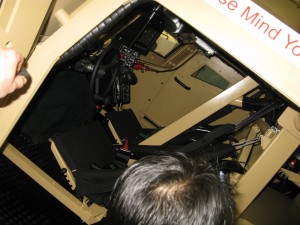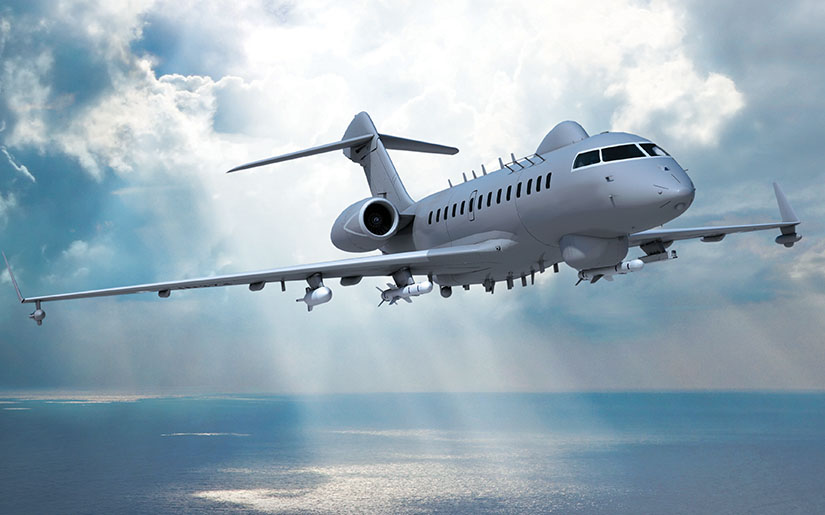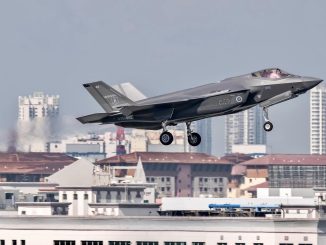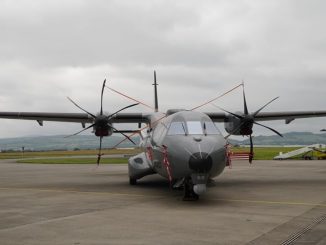PETALING JAYA: Posted below is an AFP story, on the arms industry of our southern neighbour, Singapore. I am not stating that the story tell us the whole story but its very instructive to our aspirations and dreams. To me, personally and I could be wrong here, at the end of the day, the defence budget of a country will be the main indicator of the country’s indigenous arms industry and not the other way round.
Just look at the US, India, China, Russia and even Singapore’s defence budget!
Singapore gains toehold in world arms industry
SINGAPORE: Singapore, better known for its clean-cut image and electronics exports, is seeking a place in the global arms industry by exploiting technological expertise honed on its own amply funded military.
From armoured personnel carriers used by British forces in Afghanistan to ammunition and firearms, the city-state is trying to enlarge the overseas market for its homegrown weapons and defence systems.
Its arms exports were in the limelight recently when India’s defence ministry banned six weapons manufacturers for alleged involvement in a 2009 bribery case — one of them a relatively little-known company from Singapore.
ST Kinetics, part of the multibillion-dollar ST Engineering industrial group, swiftly and vigorously denied the accusation but the mere mention of the firm underscored Singapore’s growing ambitions in the world arms market.
Singapore’s Straits Times newspaper said ST Kinetics was bidding for a contract to supply India with howitzers when the process was put on hold over the bribery allegations.
Its parent ST Engineering, with revenues of Sg$5.99 billion ($4.72 billion) in 2011, was the only Southeast Asian firm on the Stockholm International Peace Research Institute’s list of the world’s top 100 defence manufacturers released last month.
Partly owned by state investment agency Temasek Holdings, ST Engineering dominates the defence industry in Singapore. It says it is one of the world’s top suppliers of 40mm ammunition as well as portable weapons like its CIS 40mm Automatic Grenade Launcher.
The company was the biggest exhibitor at last month’s Singapore Airshow where among the equipment on display was a new version of the Bronco, an armoured all-terrain troop carrier used by British forces in Afghanistan.

“Our things are battle-proven. If you need something special, we can also customise to give you an edge over other people,” Patrick Choy, executive vice-president for international marketing at ST Engineering, told AFP at the show.
The British Army’s 115 Broncos — first deployed in Afghanistan in 2010 and dubbed the “Warthogs” — are ST Engineering’s pride, and billed as the first armoured vehicles built for a Western army by an Asian firm.
Britain has around 9,500 troops in Afghanistan, the second-largest foreign contingent after the US troops in the coalition, operating in the the difficult terrain of Helmand province.
Jon Grevatt, a defence specialist for IHS Jane’s, a global security think tank, said the firm “has done a grand job with the Bronco” but noted that “the British Army heavily customised it to suit its operational needs in Afghanistan”.
Beyond Britain, ST Engineering exports weapons and military equipment to other countries but refuses to divulge details.
According to the Stockholm institute, Singapore has sold defence products to Indonesia, Chad, Nigeria, the Philippines, the United Arab Emirates and Brazil since 2000, generating $1.75 billion in 2010 alone.
Despite its diverse customer profile, ST Engineering is still heavily dependent on the Singapore Armed Forces (SAF), Grevatt said.
Massive defence budget
Singapore has the largest defence budget in Southeast Asia, thanks to public funds generated by its phenomenal economic growth. It has set aside Sg$12.28 billion ($9.68 billion) for defence in 2012, at 24.4 percent the largest single allocation in the government’s total budget.
Surrounded by far larger neighbours, Singapore has pursued a robust defence strategy since its acrimonious split with Malaysia in 1965, and was initially advised by Israel.
All able-bodied Singaporean men are required to devote two years of full-time military service upon turning 18, providing additional manpower on top of the estimated 20,000 armed forces regulars.
“As a defence manufacturer ST is driven largely by what the SAF needs… which is still conventional systems,” Grevatt said.
“ST’s conventional land systems for the SAF will be difficult to sell outside Singapore because several factors are against it… the Western market is in decline and conflicts are also winding down.”
However, ST Engineering’s non-defence sectors contribute about 60 percent of revenues, with the diverse portfolio bolstering growth potential, he added.
Apart from its defence business, the company has worldwide operations in commercial land systems, aerospace, the marine industry and engineering, with over 100 subsidiaries in 23 countries.
Its aviation arm ST Aerospace is the largest independent aircraft maintenance, repair and overhaul provider in the world.
“Defence manufacturers today have to be diverse and have their fingers in many pies to survive,” Grevatt said.
– AFP
– Malaysian Defence
If you like this post, buy me an espresso. Paypal Payment




I think we should produced more and more local made weapons and our focus should be on designing light vehicle and apcs or maybe a light multi-role tank perhaps.. and export it to 3rd world country as first step, if proton & perodua can , how come the army can’t? If they are political barrier just ignored it, Kick the opposition away from political table if nessasary , The opposition expecially from D and PK are puppets of Singapore and Backup by Israeli who never wanted to see muslim nation advanced in Military
Reply
Its not about the opposition its not having enough funds to develop the armed forces let alone to bring up the local arms industry
IMO now Sings & Indonesia have better quality of military related industries compared to us, as we rely on “everything” COTS made in outside SEA.
The Singapore defence industries is successful because it is fully funded and supported by the Singapore government.We cannot compare with them because ours are privately-owned except for CTRM etc.There is no incentive for our businessmen to innovate new products because firstly you need a lot of money, secondly the uncertainty of success due to product acceptability.So why take unnecessary risks?
We still could have built a credible MAF without the need to have export-oriented defence industries.The money allocated to defence spending the last few Malaysian Plans would have given us a good military capability if only we are honest with what we should buy for the MAF to enable the soldiers, sailors and airmen to do their job of defending this nation, rather than buying things which end- up as white elephants and useless to the MAF.
Reply
http://youtu.be/SuFScoO4tb0
In case you missed it, SIPRI’s 2011 arms transfers data is out:
http://www.sipri.org/media/pressreleases/rise-in-international-arms-transfers-is-driven-by-asian-demand-says-sipri
Perhaps the following article will shed some light on why the defence industry in Malaysia is so miserably inadequate. (I can not confirm the information contained in the article, and neither do I necessarily endorse its contents)…
Reply
I deleted the link as I do not want to give free publicity to some politician. Moreover its not just that simple. Cut out the graft and we will have a great arms industry? See the next comment…
It is very hard for non Euro and non US defence companies to survive based on external orders alone as these US and Euro companies have become very dominant and powerful. Hence, domestic orders will have to compensate. So, the state will have to decide which products it wants produced in house and which it wants to buy externally. That requires a lot of state coordination for precision and quality and calls for consolidation for the smallish disparate companies. Better still; ensure the state owns and runs the consolidated company.
The other point I would like to make is that small privately run companies are more exposed to espionage and covert deals which may be against the interest of the state. It becomes worse when the state buys from these companies. My two cents.
Oh, I totally agree with Tomahawk’s points. And I also agree that is not as simple as just cutting graft. Nonetheless graft serves to distort and pervert the local defense industry in ways that undermine its development. Just throwing some “information” out there. And I’m not so naive as to believe everything I read..
Rep
Sorry I was not implying that you are naïve.
TDM made a mistake by privatizing the defence industries.
It was during his time as the PM that AIROD,SMEO,SMEA and ATSC were privatized.
He believed all business including the defence industries should be run by businessmen.
Later DEFTECH, ZETRO, SAPURA and BHIC followed suit with their own defence industry specializaton.
Without economy of scale, such defence industry modality will not take off.
We should not follow the American and European companies (which are not funded by their governments) and hope to be successful because they unlike us have access to the global market.
I think there is no need for Malaysia to excel in the defence industries.
It is better for our local companies to concentrate on becoming more self-sufficient and effective in maintenance support to keep our military hardware in tip-top condition with minimum cost to the nation.
Reply
Only Airod and SMEO were privatised. SMEA and ATSC were set up by Airod and SMEO as subsidiary companies
agree with tomahawk…perhaps we can JV with Sings and Indos to make ASEAN-specific military stuff.
Reply
We must get past the trust and who will benefit the most issues even before we can start to sit down.
First of all the companies set up for the national defence industry must be committed to produce world class products. Lets take a first look at the company manufacturing our own ammunition supplies and also had been assembling our very own Steyr and also now our own M-4 rifles.
I am not sure of the latest situation but when I was in the forces, The 7.62mm bullets and the 5.56mm bullets produced were found to be constantly misfiring-i.e they did not fire when the trigger is pulled.It was also discovered that for operations in the border region local bullets manufactured in country were not used precisely this reason and imported ammunition was used for operations. Even our own soldiers did not want to carry locally manufactured ammunition into operations as this can mean life and death for them.
Every bullet must fire every time the trigger is pulled. When we cannot even produce quality bullets which is a relatively simple technology item in or own defence industry and such bullets can only be used for practice purposes, we dont need to talk about other more sophisticated items to be manufactured.
Let us improve our quality for basic items first then we can talk about other items. Its no use having our own industry which cannot produce something for operational use but merely used for training strictly and even in training, its a hassle having to constantly clear or weapons several times during a fire detail and missing scores due to malfunctioning bullets.
Reply
You did mentioned the exact time when the malfunctioned. If its the 70s and early 80s SMEO was still wholly owned by the govt.
Defense spending should be benefitting defense of the country, economic offsets should be secondary…at least that is what i think.
And I wasn’t implying that you were implying that I was naive…
I rushed to post that link without investigating the source very well. Subsequently, I fully support your decision to remove it; the site is thoroughly partisan.
ymlee,
We no longer import 7.62mm and 5.56mm ammunition with the formation of SMEO.
The MAF has to buy these ammunition from SMEO which it manufactures locally.
Not sure how the MAF could still provide imported 7.62mm and 5.56 mm ammunition for troops doing operations along the border?? As far as I know SMEO’s ammunition are doing fine, otherwise they will be hue and cry from the MAF, for no right thinking Commander would accept defective ammunition for their soldiers.
Reply
Note that SMEO is now headed by a serving Brig Gen.
The govt still hold a golden share in SMEO although the major shareholder is Nadi, which controls Airod.
So what does Singapore make in house for the SAF (with locally developed tech or shared with foreign partnes) ? Here are some of the prominent ones..
Land – SAR 21 rifle, CIS 50 machine gun,Ultimax 100 machine gun, Bionix tracked IFV,Terrex 8 X 8 AFV,Spider LSV,Broco ATTC,155mm Primus SPH, 155mm Fh2000 field howitzer, 155mm Pegasus light weight howitzer,120mm Super Rapid Advanced Mortar system,related ammunition for the above; in particular advanced 40mm air bursting ammunition, Advanced Combat Man System battle kits for individual soldiers, battle management systems, etc. That is basically more than 2/3 of the key systems the SAF uses for land forces.
SEA – Formidable class, Victory class, Fearless class, Endurance class, UUVs, USVs, landing crafts, etc all built in Singapore. St Marine now has the competency and may build LHDs for RSN.
Air – C-130 upgrades, Fokker 50 MPA uogrades, UAVs, Super Puma assembly, maintainence, etc.
Reply
All of which are one of the reasons the defence budget is major bigger.
ST Marine’s Royal Thai Navy HTMS Angthong (Endurance class) undergoing sea trials:
http://defense-studies.blogspot.com/
More might be ordered by Thailand.
Reply
The Thais which do not share common border with Singapore, may not have the same issues, real or imagined compared to Malaysia and Indonesia, have when it comes to buying arms from Singapore. Take for example the problems Singapore and Indonesia have had in committing to the agreements concerning the use of the latter’s bombing range for military training. As for the Thais nonchalance the same could be said of other Asean countries. Personally I believe the only way Malaysia would procure arms from Singapore, if ST Engineering will allow license manufacturing in country with an one off payment!
loreng….SMEO has first refusal.
The G10 stuff is pretty spotty. The M193 is better but has been known to be very hot. One is for the AUG, the other for M16.
The .308 ball is un-spectacular . MG grade ammo.
9mm is pretty dubious, mainly due to the bizzaro decision to go with very soft brass rather than proper weather proofing on cost grounds.
The no.1 problem with SMEO ammo seems to be unreliable primers.
Since when has procurement been right thinking? Do you think that the field commanders can really affect procurement? Worst case scenario is an emergency order from PMC using Op budget. Simple.
I share the same opinion as ymlee..
SMEO ammo just doesn’t meet the required standard..
I’ve been using their 12gauge ammo for some time before I decided to change to the imported one. By estimation, I had a mis-fire in every 40-50rds. Ever since I moved on to the imported shell, I have no mis-fire for the last few hundreds of rounds fired.
And guess what, the imported shells carries the same price tag, some even cheaper then that of SMEO..
Reply
Imported stuff are always cheaper if the tax stuff don’t mess the market in favour the local stuff.
If you want cheap ammo buy Wolf from Russia. They even out price the American manufacturer back in the US
Tomahawk missed out one more item produced by ST and it is the 40mm automatic grenade launcher. World class if you ask me but their artillery shells had suffered a catastrophic premature explosion when fired from one of their guns when practising in New Zealand.The whole barrel was ripped apart together with soldiers killed and wounded.It appears that these shells are equipped with made in China fuses and ST did not make enough inspection and thus the failure.
While ST may invent defence products, it does not mean that the Singapore government will but from them.They did not take upone of the rifles produced by ST as it deems that rifle not meeting the requirement of the SAF.It was later found in Sri Lanka and many other hot spots of the world.
Some things like these made in china fuses may pass inspections but it is only when it fail on the field tat u know the true quality.
One life was lost sadlly in tat accident i think.
Just did a quick review of SMEO’s website. It appears that they provide a lot of other ammunition in addition to small arms ammunition. Have there been similar quality problems with the large calibre stuff? What about the Mk82/83 bombs? It is noteworthy that they do not produce any 125mm ammunition for the PT-91Ms. Who supplies that?
Lastly, I’d expect quality problems from a company that mispells “shotgun cartridges” as “shortgun catridges”.
The fuse was purchased from a US company which bought the China fuse, without ST knowledge. Previous batch was US made.
Prentis, from Bosnia supplied 125mm ammo, copies of Soviet ones, including KE penetrators and HEAT.
Steel case will always be cheaper. They have their own issues. In the Malaysian context steel case makes some sense,but it would deprive the scrap merchants and their cronies of a lucrative stream on income.
Azlan,
http://www.pretis.ba/index.php?lang=en
Pretis website:
http://www.pretis.ba/index.php?lang=en
Singapore Technologies enters U.S. Marine Corps Marine Personnel Carrier (MPC) programme competition – the only asian company to do so.
ST Kinetics and SAIC Team For Marine Personnel Carrier Programme
Singapore, 23 March 2012 – ST Kinetics, the land systems arm of ST Engineering, and Science Applications International Corporation (SAIC) today announced they will team for the upcoming U.S. Marine Corps Marine Personnel Carrier (MPC) programme.
The MPC will provide U.S. Marine infantry formations with an advanced generation eight-wheeled armoured personnel carrier. The MPC is intended to be a highly protected and swim-capable vehicle, with requirements shaped to provide a balance of performance, protection, and payload to ensure it is effective across the full range of military operations. The MPC programme calls for the production of approximately 100 units per year for up to 7 years, with initial awards for the testing and demonstration phase expected in April 2012.
“The SAIC and ST Kinetics team will base its offering on the modern TERREX 8×8 Armoured Personnel Carrier already fielded by the Singapore Armed Forces. By using existing and proven technology, tailored to Marine expeditionary requirements, we will be able to quickly deliver a simple, elegant, enduring and USMC-usable capability to meet the programme’s critical needs and schedule.” ~ Dan ZANINI, Senior Vice President and Landforce Systems Operation Manager, SAIC
Under the teaming agreement, SAIC will serve as the prime contractor for the MPC programme, with both companies combining their ground vehicle integration, design, production, fielding, and support expertise to field and provide the best solution to the U.S. Marines.
“We are proud to field ST Kinetics’ TERREX as the basis for our team’s offering for the USMC MPC programme. We are confident that the advanced design of the TERREX, particularly in the areas of survivability and crew habitability, will underpin an effective and affordable solution usable by the US Marines in a myriad of tough environments.” ~ Patrick CHOY, Executive Vice President and Chief Marketing Officer, ST Kinetics
====================================
In 2001, Singapore’s Bionix ICV entered the US Army’s competition for a new ICV. While beating other competition along the way, it lost to the Stryker ICV in the end because the US army wanted a wheeled solution. That contract was worth billions of dollars.But that it got finalized together with the Stryker speaks volumes about quality.
Speaking of Bionix ICV how nice would it be if MY were to build her own little mini version of a combat vehicle like a BMP? I mean it can’t be that hard to buy the machine tooling and metal cutting materials, engines can be had overseas like how Singapore uses American diesel.
If I’m correct even the Terrex had some form of outside help from a UK based company. If MY could team up with a Poland or even China it can be done. Money spent in building up self reliance is money spent right imo.
Reply
We are already building the AV8…
Small mouse, look at the big picture and decide – at the end of the day – what do we want with the amount of money that we have.
If we want to have a success like Bionix, then we have to invest in programs like NGPV and AV8. Spent billions and hoping that the company getting the contract gets to innovate. Correct me if i am wrong, AV8 costs MY $8b whilst DRB bought the basic units at $1.5b. Thats $6.5b goes into a hope – that DRB can learn.
Or we want to leverage the same $8b and get 250 units of the same vehicles, plus some helicopters and naval vessels. Buy without the TOT.
Decide.